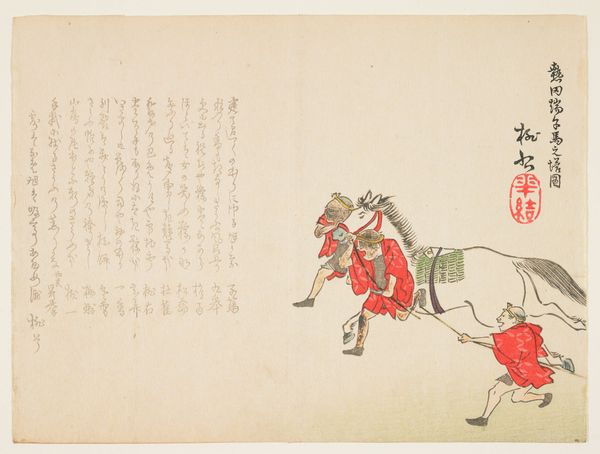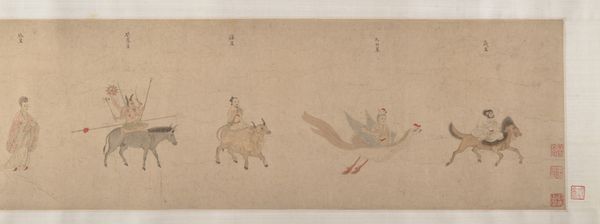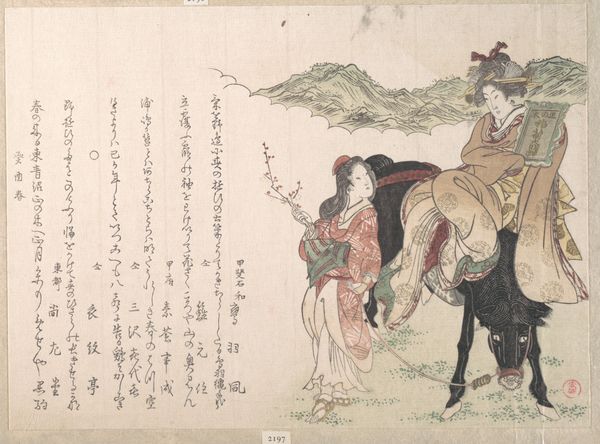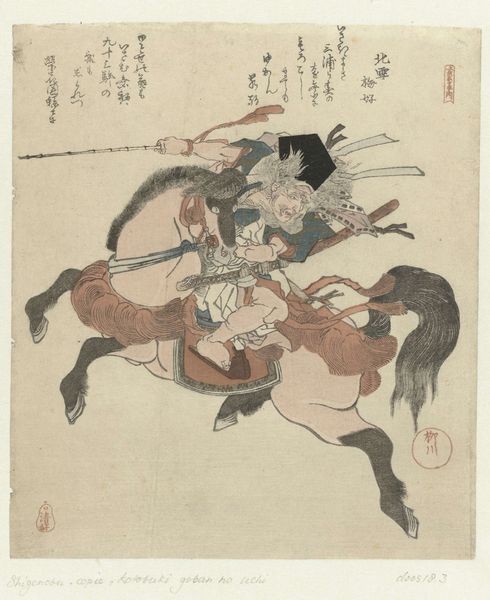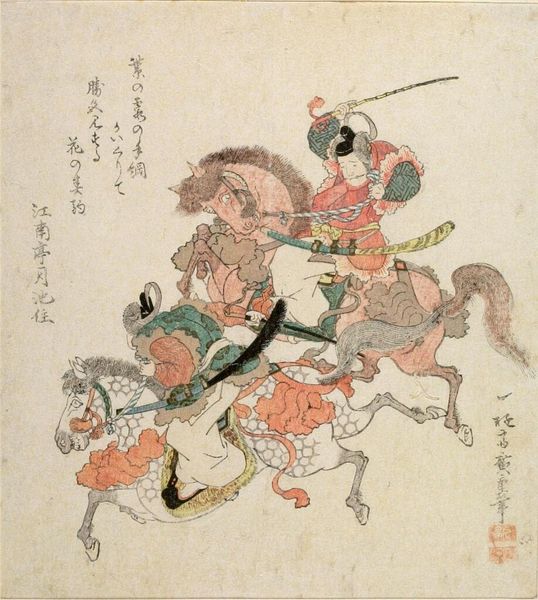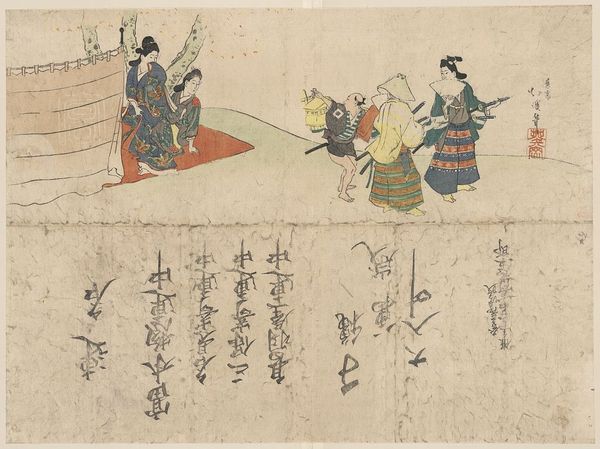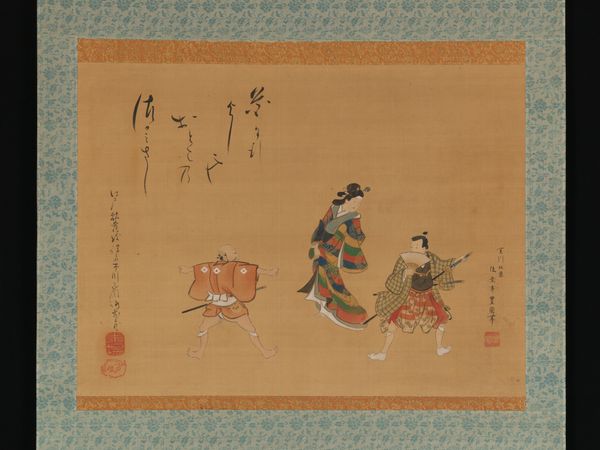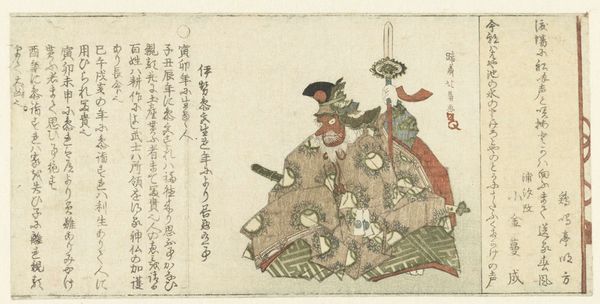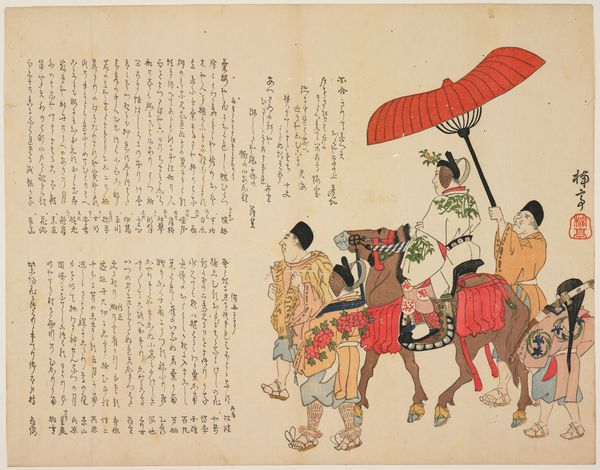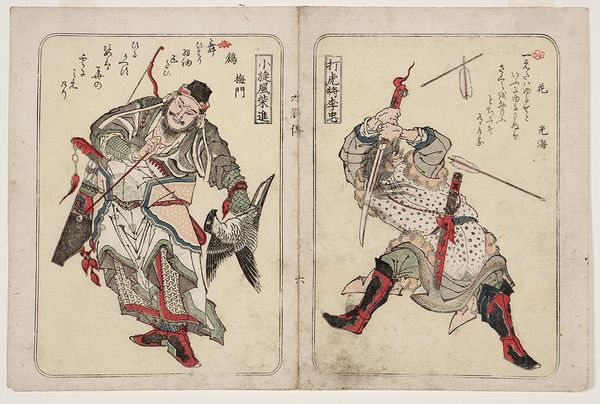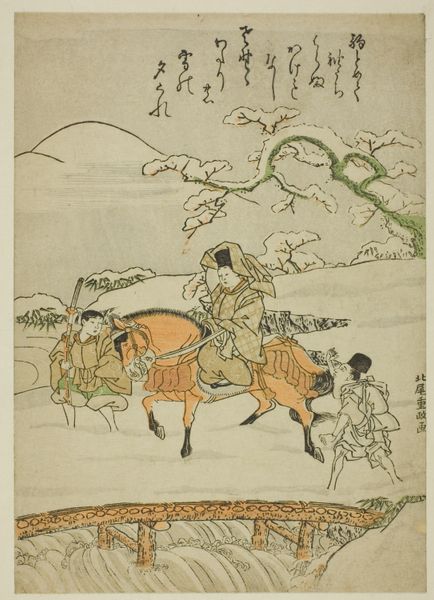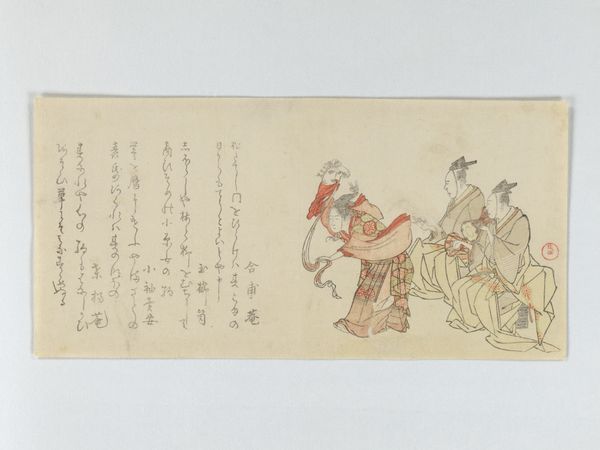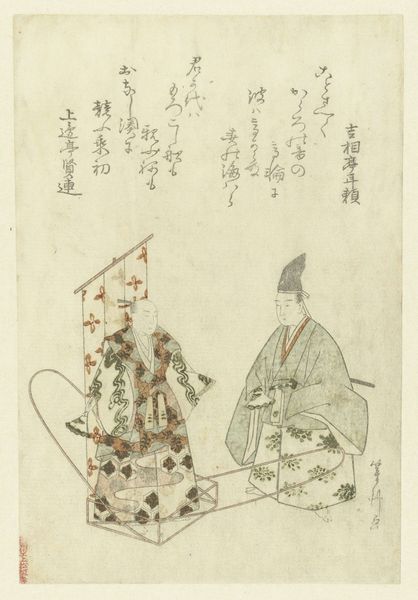
print, woodcut
#
narrative-art
# print
#
asian-art
#
landscape
#
ukiyo-e
#
figuration
#
woodcut
#
horse
#
line
#
genre-painting
Dimensions: height 106 mm, width 169 mm
Copyright: Rijks Museum: Open Domain
Curator: Before us we have a woodcut from 1798 entitled "Temple Servant Leading a White Horse." The piece exemplifies Ukiyo-e style, a genre flourishing during the Edo period in Japan. Editor: Immediately, I’m struck by the stark contrast between the detailed figures and the minimal landscape. There's almost a dreamlike quality to it. Curator: It’s a print, so the use of line is paramount. Think of it within the broader context of Ukiyo-e as "pictures of the floating world"—representations of fleeting moments. This particular scene offers insights into the social hierarchy of the era. Note how the servant, likely a commoner, dutifully leads the horse. It implies both servitude and a connection to ritual or sacred spaces, given the temple association. Editor: Absolutely, the horse itself becomes a significant symbol. The white horse specifically often holds symbolic weight in different cultures. White, across many traditions, signifies purity, but also power. Who did this horse serve? Curator: Likely a high-ranking individual. Horses were luxury in that era, associated with samurai or wealthy merchants. So we’re presented with layers of meaning here, power dynamics intertwined with class, as viewed through the lens of everyday life, which is so core to this movement. Editor: The colors also tell a story. The muted palette, offset by the pops of red on the horse's saddle cloth, creates a quiet drama. Red itself often symbolizing energy and vitality, adding complexity to this otherwise understated scene. It invites the viewer to contemplate not just the social context, but the emotional undercurrent. Curator: Precisely, it also makes a quiet commentary on access and privilege in late 18th century Japan, underscoring a system built upon inherent inequity and servitude. Editor: Indeed, and seeing it this way allows us to reconsider its relevance even today. A glimpse into social stratification, symbolized and embedded in such delicate iconography. Curator: Exactly. This image transcends simple observation; it demands reflection on the societal structures that frame our interactions. Editor: It also invites a deeper dive into how symbolic representation allows these structures to become silently encoded and unquestioned. Curator: Yes. "Temple Servant Leading a White Horse" reveals its complex truths, one symbolic element at a time.
Comments
No comments
Be the first to comment and join the conversation on the ultimate creative platform.
